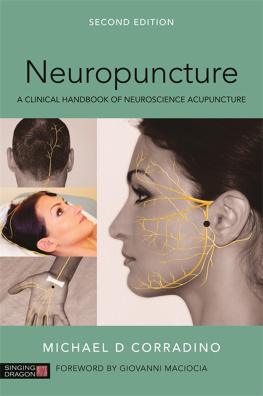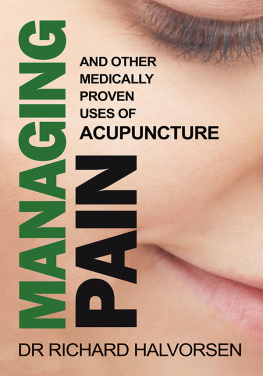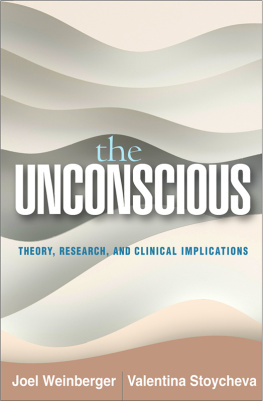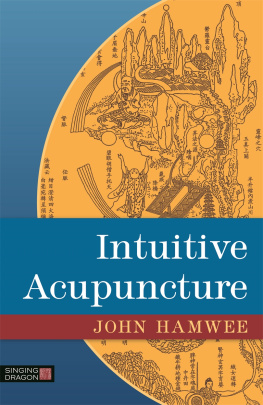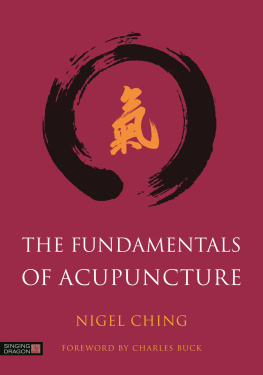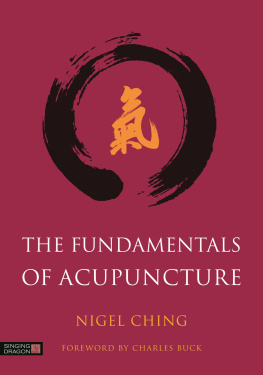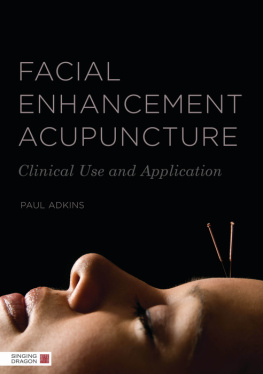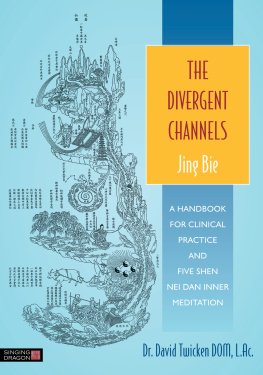
As pharmaceutical companies are starting to spend big on electroceutical research, Dr. Corradino reminds us that much of this work has already been done. Building upon years of experience would be a wise move in that quest, and this book offers an all-important brick in the understanding of bioelectric medicine. Dr. Corradino provides real and clear teachings based in his own research and clinical practice to benefit both the Eastern and Western physician. Stay ahead of the gameread this book.
Dr. Laura Kelly, author of The Healthy Bones Nutrition Plan and Cookbook
Dr. Corradinos development of the Neuropuncture system is cutting-edge acupuncture. As our profession advances and continues to become more mainstream, this content is invaluable to both new and seasoned acupuncturists. Dr. Corradino does a great job explaining the evidence-based neurophysiological mechanisms of acupuncture and presents highly effective treatment protocols. Neuropuncture is a deep dive into the world of modern biomedical acupuncture. I am extremely grateful for this much-needed contribution to our profession.
Andy Rosenfarb, N.D., L.Ac., Doctor of Naturopathic Medicine, Board Certified in Acupuncture and Chinese Herbal Medicine
of related interest
The Fundamentals of Acupuncture
Nigel Ching
Foreword by Charles Buck
ISBN 978 1 84819 313 0
e ISBN 978 0 85701 266 1
Psycho-Emotional Pain and the Eight Extraordinary Vessels
Yvonne R. Farrell, DAOM , L.AC .
ISBN 978 1 84819 292 8
e ISBN 978 0 85701 239 5
Cosmetic Acupuncture, Second Edition
A Traditional Chinese Medicine Approach to Cosmetic and Dermatological Problems
Radha Thambirajah
ISBN 978 1 84819 267 6
e ISBN 978 0 85701 215 9
Neuropuncture
A Clinical Handbook of Neuroscience Acupuncture
Second Edition
Michael D. Corradino
Foreword by Giovanni Maciocia

First edition published in 2012 by Michael D. Corradino
This second edition first published in 2017
by Singing Dragon
an imprint of Jessica Kingsley Publishers
73 Collier Street
London N 1 9 BE , UK
and
400 Market Street, Suite 400
Philadelphia, PA 19106, USA
www.singingdragon.com
Copyright Michael D. Corradino 2012, 2017
Foreword copyright Giovanni Maciocia 2012, 2017
All rights reserved. No part of this publication may be reproduced in any material form (including photocopying, storing in any medium by electronic means or transmitting) without the written permission of the copyright owner except in accordance with the provisions of the law or under terms of a licence issued in the UK by the Copyright Licensing Agency Ltd, www.cla.co.uk or in overseas territories by the relevant reproduction rights organisation, for details see www.ifrro.org. Applications for the copyright owners written permission to reproduce any part of this publication should be addressed to the publisher.
Warning: The doing of an unauthorised act in relation to a copyright work may result in both a civil claim for damages and criminal prosecution.
Library of Congress Cataloging in Publication Data
Title: Neuropuncture : a clinical handbook of neuroscience acupuncture / Michael Corradino.
Description: Second edition. | London ; Philadelphia : Jessica Kingsley Publishers, 2017. | Includes bibliographical references.
Identifiers: LCCN 2016042884 (print) | LCCN 2016044233 (ebook) | ISBN 9781848193314 (alk. paper) | ISBN 9780857012876 (ebook)
Subjects: | MESH : Acupuncture Therapy--methods | Nervous System Physiological Phenomena
Classification: LCC RM184 (print) | LCC RM184 (ebook) | NLM WB 369 | DDC 615.8/92--dc23
British Library Cataloguing in Publication Data
A CIP catalogue record for this book is available from the British Library
ISBN 978 1 84819 331 4
e ISBN 978 0 85701 287 6
Contents
Foreword to the First Edition
Acupuncture is a very rich tradition characterized by many different styles, theories, and approaches, inspired by the medicine of different countries such as China, Vietnam, Japan, and Korea, and now, Western countries. It is a powerful medicine that has proved its value over thousands of years starting in China and now practiced literally all over the world.
There are many ways of practicing acupuncture: far from detracting from it, this diversity enriches it. If we see this diversity from a traditional and, I would say, Daoist perspective, we can accept it and embrace it. Seen from a scientific perspective, this diversity poses a problem. How can we treat the same person and the same problem in so many different ways, with all of them effective? Of course we can: life is fluid and rich, and acupuncture is a therapy that treats the person addressing the whole person through the channels. The ancient Chinese word for body (that the channels treat) is shen []. Although often translated as body, it is more than the body, and it could be said to be the self, or the person. Interestingly, the word shen for body has the same sound as the word shen for mind and spirit.
In the modern, Western world, we have a new diversity of acupuncture practice: traditional versus scientific. I use the quotation marks around those two words intentionally as they are words that are open to interpretation and misunderstanding. It would be difficult to define what traditional acupuncture is: is the one from the Han dynasty more traditional than the styles practiced much later in the Qing dynasty? Is Japanese acupuncture more traditional than Chinese because it tends to follow the more ancient classics? Is an acupuncturist who uses laser for the stimulation of points not traditional?
The word scientific is also open to interpretation. Is scientific acupuncture one that dismisses the concept of channels altogether in favor of nerves as an explanation of how acupuncture works? Or is it a type of acupuncture whose practitioners use only protocols deriving from published studies?
Unfortunately, the two camps of traditional and scientific acupuncture do not seem to meet at all. For example, Dr. Felix Mann says in his book Reinventing Acupuncture: A New Concept of Ancient Medicine : The traditional acupuncture points are no more real than the black spots a drunkard sees in front of his eyes (Mann, 2000, p.14). He also says: The meridians of acupuncture are no more real than the meridians of geography. If someone were to get a spade and try to dig up the Greenwich meridian, he might end up in a lunatic asylum. Perhaps the same fate should await those doctors who believe in [acupuncture] meridians (Mann, 2000, p.31).
White and Campbell (2005) say in the British Medical Journal Online :
Traditional Chinese medicine includes a number of concepts that are contrary to the current prevailing understanding of anatomy and physiology. One is the whole idea of meridians. Another is the very basis of diagnosis and treatment: that a particular set of points can be chosen to treat Liver fire rising and a different set of points chosen to treat Dampness in the Spleen. This belief system requires the suspension of disbelief by many Western practitioners and patients, and raises questions about the use of belief in medicine, credulity, and patient autonomy.
They also say:
There is an alternative theoretical model that provides a solution to the paradox of RCT results in acupuncture: that the needles stimulate nerves, not meridians and points. Therefore, for many conditions, the needle can be inserted almost anywhere within the relevant spinal segment: it is the skin or muscle penetration that is sufficient. (White & Campbell, 2005)
Next page
